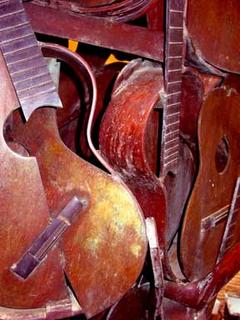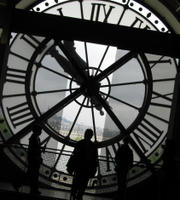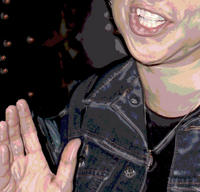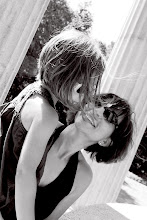Yoga & Enlightenment Through Art
 Yoga & Enlightenment Through Art
Yoga & Enlightenment Through ArtYoga teacher Ronald Lewis Facchinetti has a unique view on art and yoga. He leads yoga practice in museums and galleries, and he has created a focused meditative practice on art.
His manifesto:
"Practice yoga through art."
"Change from spectator into contemplator."
"Find catharsis."
Facchinetti began with a yoga discipline called Trataka, which is a form of visual concentration. Instead of applying his focus to a mandala or candle flame (a more common yogic meditation practice), he applies Trataka to visual art.
Yoga is about the union of mind and body. Art, too, can help us create connections. This seems to be what Facchinetti is after. On his website (http://www.interstitialism.com/), he writes "Our path of self understanding and self liberation runs through the fields of visual art."
I know that I find greater self-awareness through the expression and creation of my art. This must be something every artist feels. In this case, he is also talking about all viewers of art.
In one of his online forums, he asks, "Ever weep, faint or get upset in front of a painting or sculpture? Any hallucinations?"
Well... I felt a little embarrassed crying in the New York Museum of Modern Art a few years back. But, I guess compared to hallucinating or fainting, it was a mild experience. It was my first visit to the NY MOMA, and I came upon Picasso's Les Mademoiselles d' Avignon, and I simply started crying. I sat down for a while in ftont of it, and just looked and cried. And tried to be as inconspicuous as possible.
Sure, I was already emotional because I was thrilled to be there, and yes, I think I remember reading that this particular painting was pivotal in Cubism (maybe Picasso's first?)... but my reaction seemed much simpler than that.
I don't know how to explain it any better than to say -- It just hit me.
It was bigger in size than I must have imagined (it's nearly eight feet square), and the image was powerful and intense. Apparently, it was intense for Picasso too. He referred to this work as his "first exorcism painting." (NY MOMA website for the image and comments: http://moma.org/collection/browse_results.php?object_id=79766)
Did I experience a moment of enligtenment? I don't know. But my emotions were strong, and despite the tears, my experience was much more of joy than sadness.
Namaste to Picasso, I say. And to the artist in all of us.
(For you non-yogi's, namaste is about the divine spark within each of us. Namaste is a gesture and greeting to acknowledge the soul in one another.)


 Art Everyday, Everywhere
Art Everyday, Everywhere Yeah, but you didn’t.
Yeah, but you didn’t.




